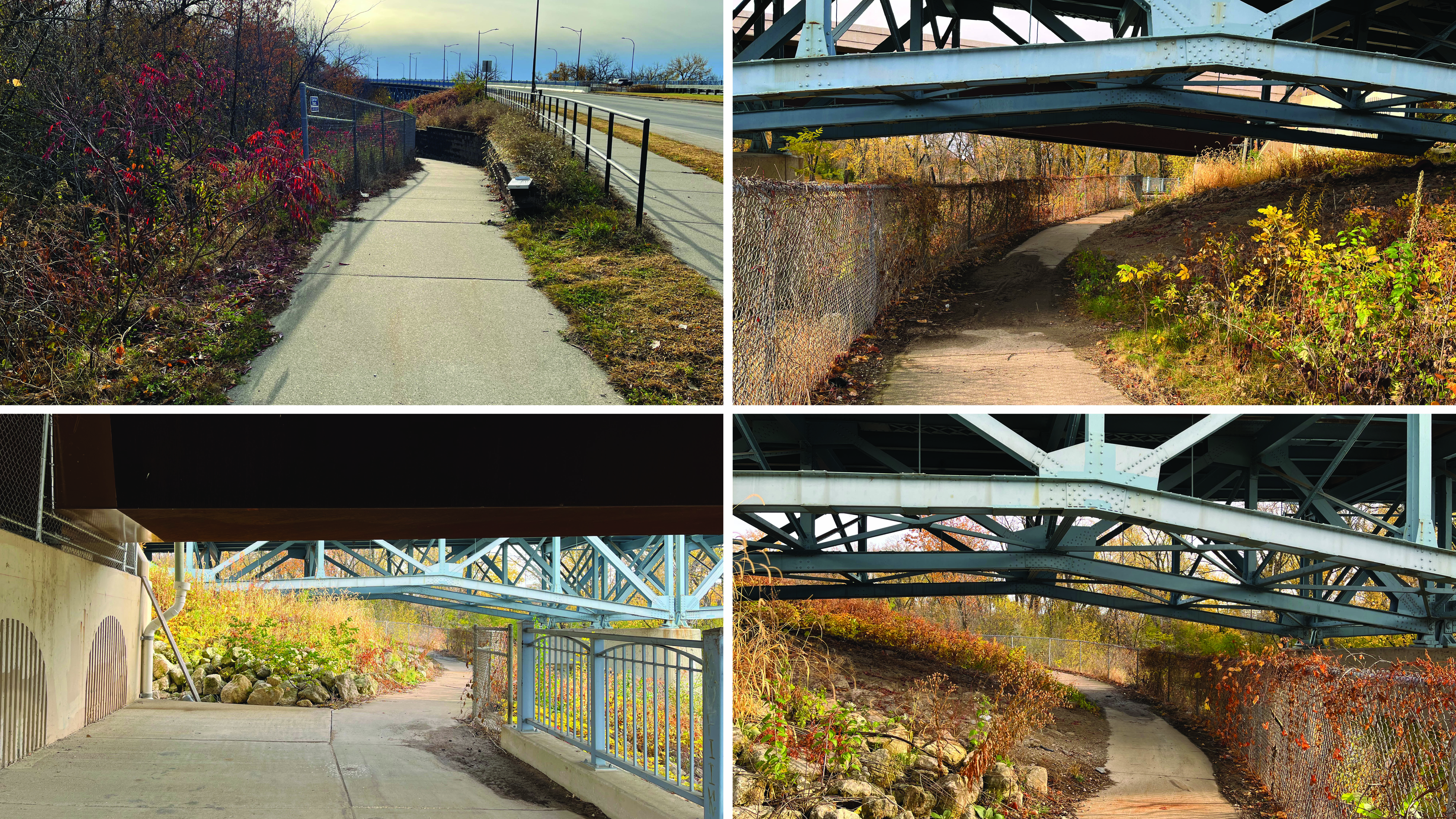
Challenge
The City of La Crosse, Wisconsin, sought to create a safer, more accessible shared-use path connecting Minnesota and Wisconsin. The existing Wagon Wheel Trail, which meanders through the scenic marshes and wetlands of the Mississippi River, currently ends at Sportsman’s Boat Landing in Minnesota. From there, pedestrians and cyclists lacked a direct, dedicated route to cross the Mississippi River West Channel and reach La Crosse via the US Highway 14/61 bridge.
Further complicating the situation, the infrastructure on the Wisconsin side of US 14/61 included only a narrow 6-foot sidewalk, which limited its use for shared activities like cycling and walking. This gap hindered the flow of non-motorized traffic between the two states, creating a barrier to regional connectivity and reducing opportunities for recreational and commuter use.
Solution
To address these challenges, the City partnered with SEH to develop a safer, more accessible shared-use path. Leveraging funding from the Transportation Alternatives Program (TAP), the team created a detailed design plan that focused on transforming the existing infrastructure. This plan involved widening a one-mile stretch of sidewalk into a 10-foot shared-use path and widening the US Highway 14/61 bridge to support both pedestrian and bicycle traffic.
The newly designed path begins at Sportsman’s Boat Landing in Minnesota and extends across state lines into Wisconsin, ultimately ending beneath the Cass Street and Cameron Avenue bridge underpasses. This strategic alignment ensures a direct route for pedestrians and cyclists, addressing the gap that previously limited non-motorized traffic between the states.
Throughout the project, the SEH experts prioritized seamless integration of the new infrastructure with the existing landscape, emphasizing ecological sensitivity as this area is home to a variety of susceptible habitats, including wetlands, riparian zones, and marshes. These ecosystems serve as vital breeding and feeding grounds for fish, amphibians, and migratory birds, while also providing essential habitat for species like the endangered Higgins eye pearly mussel. The area is also a key corridor for bald eagle nesting sites and a major flyway for migratory birds, making it crucial to protect these habitats during project development to preserve the region's ecological health. Navigating these environmental challenges required close collaboration with various state and federal agencies, including:
- Wisconsin and Minnesota Departments of Transportation (WisDOT and MnDOT)
- Wisconsin and Minnesota Departments of Natural Resources (WDNR and MNDNR)
- U.S. Fish and Wildlife Service (USFWS)
- U.S. Army Corps of Engineers (USACE)
- U.S. Coast Guard (USGC)
- Federal Highway Administration (FHWA)
Equally important to the project’s success was engaging the local community and stakeholders in the process. SEH facilitated regular communication with local Advisory Committees, state agencies, and federal partners to gather input and build consensus. The project team also hosted public meetings to keep the community informed, address concerns, and adapt the design to meet residents' needs.
The collaboration between the City of La Crosse and SEH successfully created a safe, accessible shared-use path enhancing connectivity between Minnesota and Wisconsin. Prioritizing environmental sensitivity, community engagement, and coordination with state and federal agencies, the project navigated regulatory and ecological challenges to support pedestrian and cyclist traffic while preserving the Mississippi River’s natural habitats. This achievement demonstrates the value of strategic planning, innovative design, and teamwork in delivering sustainable infrastructure that benefits both residents and the environment.
Project
Wagon Wheel Trail Design
Location
La Crosse, Wisconsin
Client
City of La Crosse
Features
- Bridge expansion to support multimodal traffic
- Established a direct route from Sportsman’s Boat Landing in Minnesota to La Crosse, Wisconsin
- Prioritized seamless integration of infrastructure with the existing landscape
- The final trail segment connected to the Minnesota-Wisconsin state line bridges completing a crucial link in the regional trail system
Services
- Survey
- Civil Engineering
- Water Resources Engineering
- Environmental Engineering
- Geotechnical Engineering
- Structural Engineering

.png?width=113&name=SEH_Logo_RGB%20(1).png)
